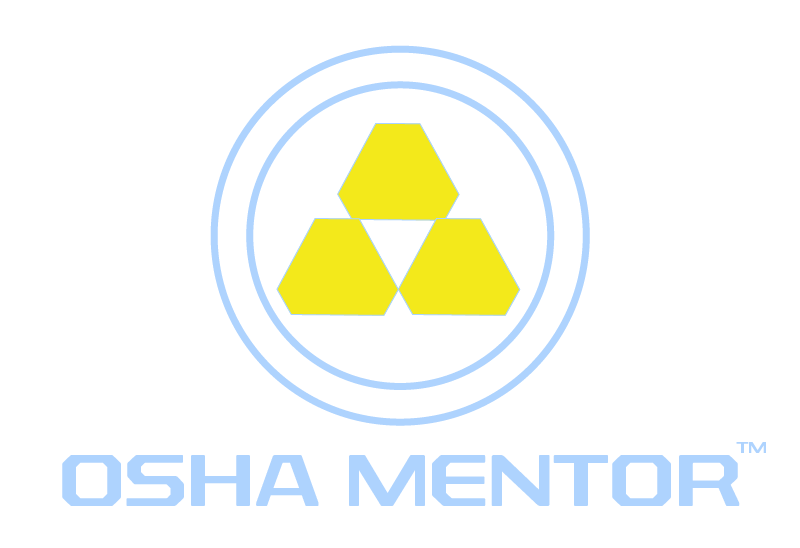
What is OSHA HAZWOPER?

OSHA is an acronym which stands for Occupational Safety and Health Administration (OSHA) and (HAZWOPER) stands for Hazardous Waste Operations and Emergency Response. The genesis of these two acronyms comes from Congress. Congress enacted the Occupational Safety and Health Act (OSH) in 1970 which created OSHA. In 1986, Congress passed the Superfund Amendments Reauthorization Act (SARA) law to provide a legal framework for HAZWOPER. Members of Congress saw the impact of the large chemical spill accident in Bhopal, India which happened in 1984. They realized that America had similar hazardous material/substance issues and concerns. This law enacted by Congress gave the enforcement power to OSHA. OSHA was charged with developing regulations to enforce employee health and safety for 3 main levels - general site cleanup, emergency response and for Resource Conservation and Recovery Act (RCRA) Treatment Storage and Disposal (TSD) Facilities. The HAZWOPER regulations are codified and listed in Title 29 Code of Federal Regulations (CFR) Part 1910.120. They provide assistance to employees in the safe and proper handling and management of hazardous materials/wastes.
OSHA is not the sole regulatory body who addresses HAZWOPER. OSHA has approved several states in order that they may implement their own regulations. These are the so called OSHA State Plans. These approved states have the obligation to develop regulations as least as stringent as the federal regulations. In many cases, the states are more stringent than the federal OSHA standard. Please make you know If you are performing work in an OSHA State Plan or if federal OSHA has primacy. This is critical to OSHA compliance.
OSHA's HAZWOPER standards, found in general industry (29 CFR 1910.120) and construction (29 CFR 1926.65), set forth health and safety requirements for employers involved in these operations and emergency responses to hazardous substance releases. HAZWOPER mandates that employers adhere to specific work policies, practices, and procedures to safeguard their workers who may be exposed to hazardous substances. These standards equip employers with the necessary information and training criteria to ensure workplace health and safety during hazardous waste management, emergency response, and cleanup activities involving hazardous substances. The overarching goal of HAZWOPER is to prevent and minimize the risk of worker injuries and illnesses stemming from potential exposures to hazardous substances. Exposure to hazardous substances can result in a wide spectrum of immediate (acute) and long-term (chronic) health effects. These may encompass chemical burns, sensitization, irritation, and other toxic effects that could lead to fatalities. Releases of hazardous substances can also trigger fires, explosions, high-energy events, and toxic atmospheres, depending on the physical properties and health hazards of the substances involved.
OSHA is not the sole regulatory body who addresses HAZWOPER. OSHA has approved several states in order that they may implement their own regulations. These are the so called OSHA State Plans. These approved states have the obligation to develop regulations as least as stringent as the federal regulations. In many cases, the states are more stringent than the federal OSHA standard. Please make you know If you are performing work in an OSHA State Plan or if federal OSHA has primacy. This is critical to OSHA compliance.
OSHA's HAZWOPER standards, found in general industry (29 CFR 1910.120) and construction (29 CFR 1926.65), set forth health and safety requirements for employers involved in these operations and emergency responses to hazardous substance releases. HAZWOPER mandates that employers adhere to specific work policies, practices, and procedures to safeguard their workers who may be exposed to hazardous substances. These standards equip employers with the necessary information and training criteria to ensure workplace health and safety during hazardous waste management, emergency response, and cleanup activities involving hazardous substances. The overarching goal of HAZWOPER is to prevent and minimize the risk of worker injuries and illnesses stemming from potential exposures to hazardous substances. Exposure to hazardous substances can result in a wide spectrum of immediate (acute) and long-term (chronic) health effects. These may encompass chemical burns, sensitization, irritation, and other toxic effects that could lead to fatalities. Releases of hazardous substances can also trigger fires, explosions, high-energy events, and toxic atmospheres, depending on the physical properties and health hazards of the substances involved.
According to OSHA regulations, each employer bears the responsibility for the safety and health of its workforce and for creating a safe and healthy workplace. Employers are obligated to shield workers from foreseeable hazards linked to their involvement in hazardous substance response and recovery operations. OSHA's core mission is to guarantee the safety and well-being of American workers by establishing and enforcing standards while also delivering outreach, education, and compliance support.
How Do I Become HAZWOPER Certified and Trained?
The OSHA HAZWOPER regulations specify that training and certification be provided for employees engaged in work with hazardous materials. These fall into 3 main levels with different job classifications.
1. General Site Cleanup
2. Emergency Response
3. RCRA TSD Facilities
There are specific parameters around the training as issued by OSHA. These requirements involve a time based part and/or competency based part. To discover what the different job classifications are, please refer to our article "What HAZWOPER Training Do I Need"? If you need to find out if you are covered by an OSHA State Plan, please click here.
There are specific parameters around the training as issued by OSHA. These requirements involve a time based part and/or competency based part. To discover what the different job classifications are, please refer to our article "What HAZWOPER Training Do I Need"? If you need to find out if you are covered by an OSHA State Plan, please click here.
Related Articles
What is the difference between HAZWOPER 40 and HAZWOPER 24?
Does OSHA certify me to work?
HAZWOPER Job Duties and Responsibilities
What Is OSHA HAZWOPER?
HAZWOPER PPE Levels
PPE Meaning
OSHA Certification
HAZWOPER Training Regulations
Does OSHA certify me to work?
HAZWOPER Job Duties and Responsibilities
What is HAZWOPER Site Control?
What is a HAZMAT Suit?
What happens if my HAZWOPER certification expires?
Which HAZWOPER training do I need?
HAZWOPER Training RegulationsWhat is a HAZMAT Suit?
What happens if my HAZWOPER certification expires?
Which HAZWOPER training do I need?
What Is OSHA HAZWOPER?
HAZWOPER PPE Levels
PPE Meaning
OSHA Certification
HAZWOPER Training Regulations
Sources
Write your awesome label here.


